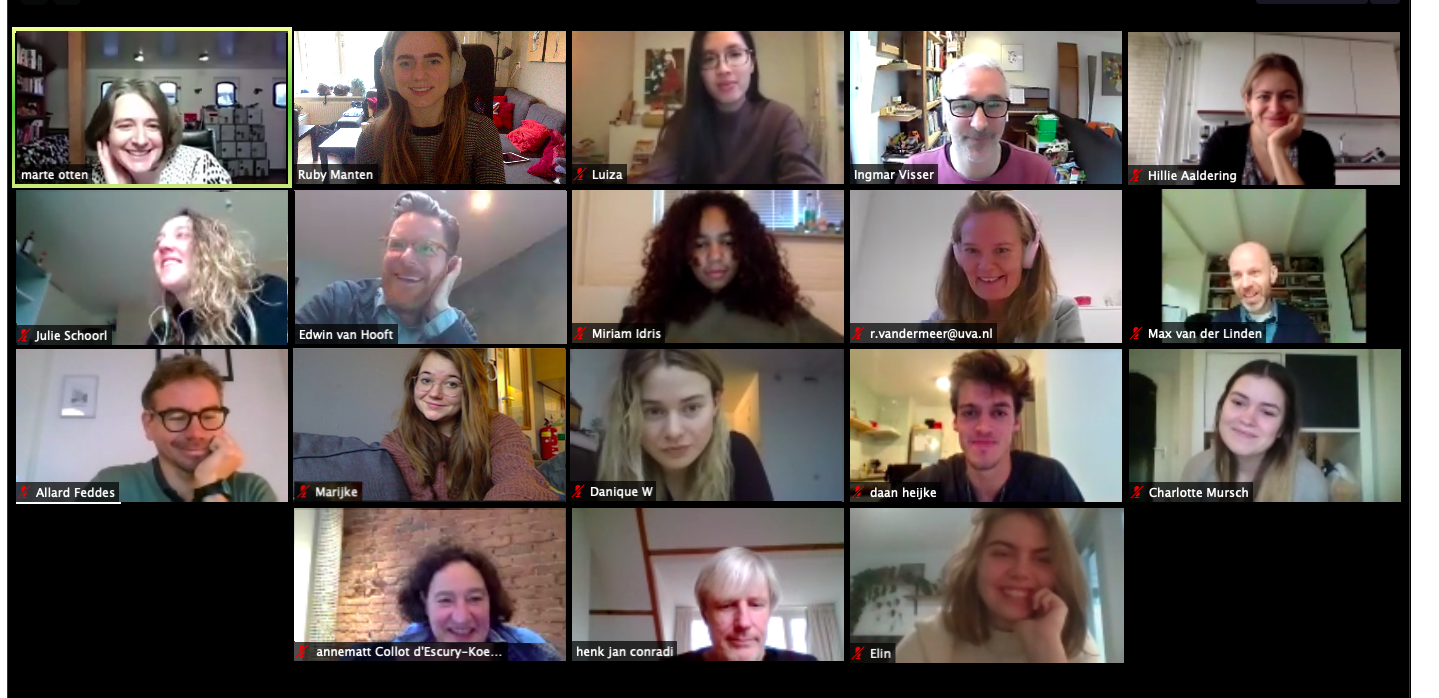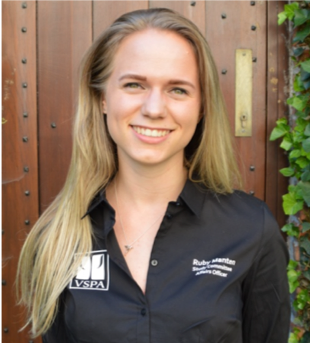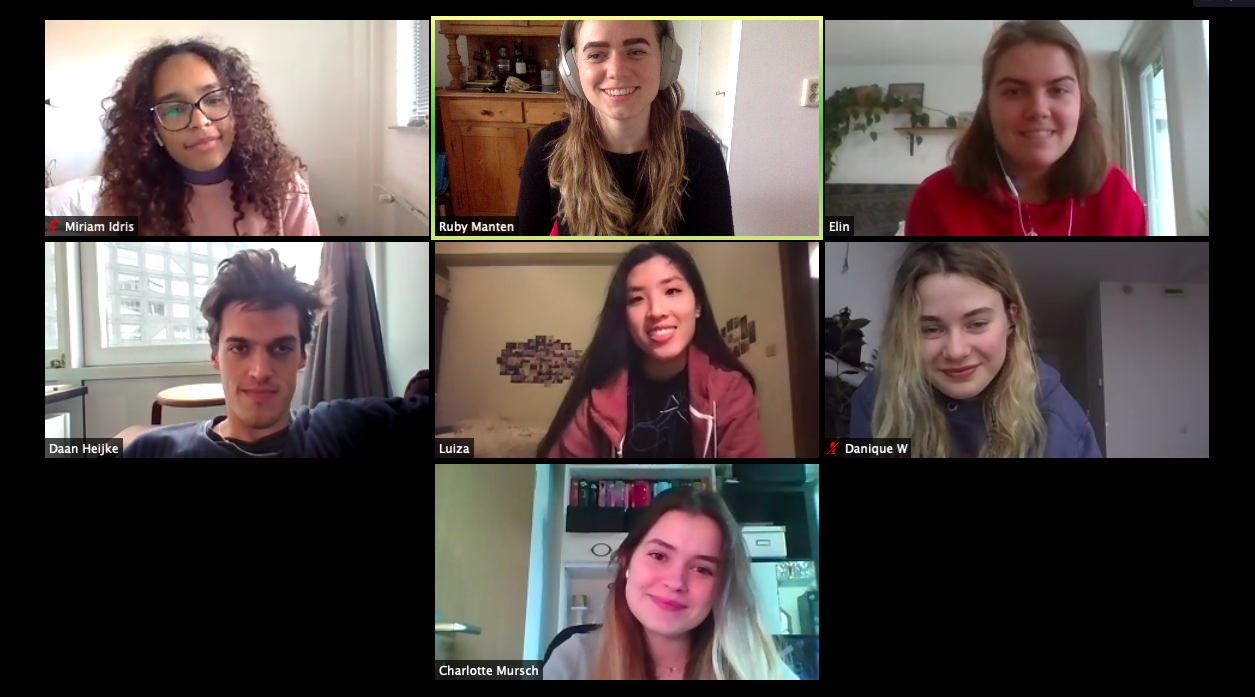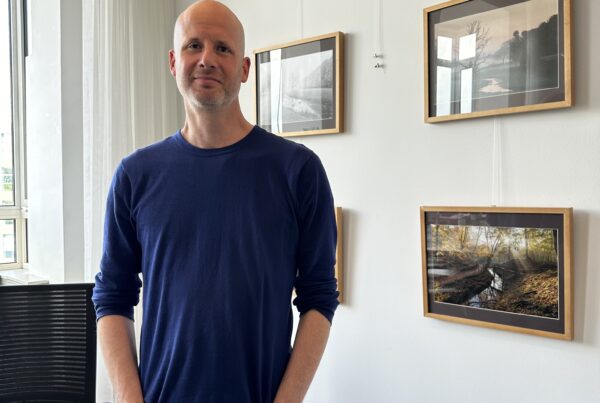
Ruby Manten is the new student chair for the PC, for the year 2020-2021. She has been in the PC for almost 2 years and is currently the only master’s student (Clinical Neuropsychology Masters track). The PC consists of 14 members, half are teachers and the other half are students from each of the seven specialisations. There are monthly plenary meetings which are attended by both teachers and students, and two additional meetings where only the students meet.

What is the role of the PC?
‘The PC has three core tasks besides other tasks. Our main task is to evaluate and monitor the quality of education at the psychology department. For example, we look at the semester reports, in which there are evaluations of every course. These are based on the UvA Q, the questionnaires completed by students after every exam. Using these, we try to identify possible issues in courses, such as study load being too high/low, grades being too low/high or exam questions being too unclear. The PC then asks the programme group coordinators to respond to the semester reports with a plausible explanation (if any) for the issues and what they plan to improve on in the future. They also give their own opinion about how their courses are evaluated, for example, if they are happy with the outcoming of the semester report or not. Another task of the PC is to analyse the drafts of the new Teaching and Exam Regulations changes, with a focus on checking whether the changes are reasonable and achievable for both students and teachers. Lastly, we evaluate proposals for the quality funds, meant to improve the quality of education.
Besides those tasks, we have the buddy projects. During the first meeting of the year, we discuss important topics we want to look into. These projects are then divided amongst the PC members, based on their interest in specific projects, to form teacher-student pairs. For example, this year the projects are on student and teacher wellbeing, online education, and the master thesis canvas page. The buddy pairs try to formulate solutions for the issues, such as ways to make online learning more engaging for students.’
Are there conflicts during the plenary meetings? How are they resolved?
‘The most conflict probably stems from the differing perspectives and goals of the 14 members, as it can sometimes be hard to align these. For instance, teachers want to provide quality courses, but students may not always agree with the quality or approach. Both parties may find it hard to explain their perspective and help each other understand differing opinions. We are trying to reduce conflicts through the teacher-student buddy pairs. The pairs now prepare for the monthly meeting together. This way, the pairs can already start talking one-on-one which may facilitate understanding through discussing and untangling differing views within the pair. This shared understanding can be brought into the meeting which helps everyone formulate their opinions better. An example of a conflict is the differing views on the quality of the questionnaires students have to fill out. From the students’ perspective, the forms may be so well thought out that they can be confusing or hard to understand while the staff thinks that it isn’t practical to change the forms as, for example, there are already many forms. The students also understand that it would be a lot of work. These situations can be tricky as both the students and teachers have good intentions but come from different perspectives so it can be hard to be on the same page. However, these clashes usually resolve themselves at the end of the meeting. The meetings themselves are nice and peaceful. We may differ in opinions, but it is a level-headed discussion with compromises.’

What is your role as the student chair?
‘Within the student body of the PC, I prepare the agendas and chair the student meetings, as well as keep track of the wellbeing of the student members. Besides that, I help to ensure the points discussed in the student meetings are brought up in the plenary meeting. I also try to keep track of all buddy projects, tracking what all the students are doing within their projects. If relevant, the updates can be brought up during the plenary meeting. Outside the student body, I function as the middleman between the student and teacher groups. I communicate with the teacher chair, Marte Otten, to find out what she is doing, what her plans for the plenary meeting are, and to double-check the agenda against the annual plan we made together. If the students have any complaints, I can discuss this with Marte as well. For instance, students may feel they are not heard enough during the plenary meetings, so we discuss the issue, and we try to think of solutions to ensure students’ opinions get more attention.’

Students and lecturers who are not members of the Programme Committee can still attend meetings. To do so, they should contact the Education Desk Psychology (educationdesk-psy@uva.nl). If you wish to find out more about the meetings and the PC, click here.

What is the role of the PC?
‘The PC has three core tasks besides other tasks. Our main task is to evaluate and monitor the quality of education at the psychology department. For example, we look at the semester reports, in which there are evaluations of every course. These are based on the UvA Q, the questionnaires completed by students after every exam. Using these, we try to identify possible issues in courses, such as study load being too high/low, grades being too low/high or exam questions being too unclear. The PC then asks the programme group coordinators to respond to the semester reports with a plausible explanation (if any) for the issues and what they plan to improve on in the future. They also give their own opinion about how their courses are evaluated, for example, if they are happy with the outcoming of the semester report or not. Another task of the PC is to analyse the drafts of the new Teaching and Exam Regulations changes, with a focus on checking whether the changes are reasonable and achievable for both students and teachers. Lastly, we evaluate proposals for the quality funds, meant to improve the quality of education.
Besides those tasks, we have the buddy projects. During the first meeting of the year, we discuss important topics we want to look into. These projects are then divided amongst the PC members, based on their interest in specific projects, to form teacher-student pairs. For example, this year the projects are on student and teacher wellbeing, online education, and the master thesis canvas page. The buddy pairs try to formulate solutions for the issues, such as ways to make online learning more engaging for students.’
Are there conflicts during the plenary meetings? How are they resolved?
‘The most conflict probably stems from the differing perspectives and goals of the 14 members, as it can sometimes be hard to align these. For instance, teachers want to provide quality courses, but students may not always agree with the quality or approach. Both parties may find it hard to explain their perspective and help each other understand differing opinions. We are trying to reduce conflicts through the teacher-student buddy pairs. The pairs now prepare for the monthly meeting together. This way, the pairs can already start talking one-on-one which may facilitate understanding through discussing and untangling differing views within the pair. This shared understanding can be brought into the meeting which helps everyone formulate their opinions better. An example of a conflict is the differing views on the quality of the questionnaires students have to fill out. From the students’ perspective, the forms may be so well thought out that they can be confusing or hard to understand while the staff thinks that it isn’t practical to change the forms as, for example, there are already many forms. The students also understand that it would be a lot of work. These situations can be tricky as both the students and teachers have good intentions but come from different perspectives so it can be hard to be on the same page. However, these clashes usually resolve themselves at the end of the meeting. The meetings themselves are nice and peaceful. We may differ in opinions, but it is a level-headed discussion with compromises.’

What is your role as the student chair?
‘Within the student body of the PC, I prepare the agendas and chair the student meetings, as well as keep track of the wellbeing of the student members. Besides that, I help to ensure the points discussed in the student meetings are brought up in the plenary meeting. I also try to keep track of all buddy projects, tracking what all the students are doing within their projects. If relevant, the updates can be brought up during the plenary meeting. Outside the student body, I function as the middleman between the student and teacher groups. I communicate with the teacher chair, Marte Otten, to find out what she is doing, what her plans for the plenary meeting are, and to double-check the agenda against the annual plan we made together. If the students have any complaints, I can discuss this with Marte as well. For instance, students may feel they are not heard enough during the plenary meetings, so we discuss the issue, and we try to think of solutions to ensure students’ opinions get more attention.’

Students and lecturers who are not members of the Programme Committee can still attend meetings. To do so, they should contact the Education Desk Psychology (educationdesk-psy@uva.nl). If you wish to find out more about the meetings and the PC, click here.



